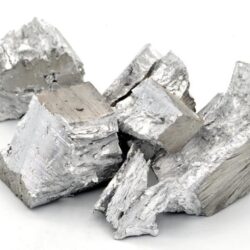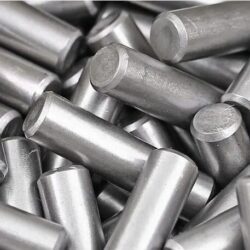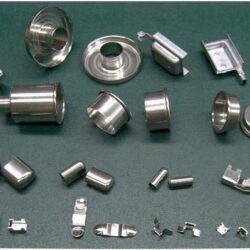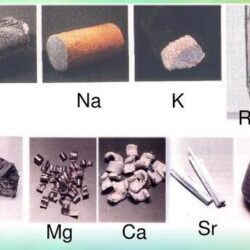Carbon steel is a special type of steel that, as the name suggests, has a higher concentration of carbon than other types of steel. Most types of steel have a relatively low carbon content of about 0.05% to 0.3%. In comparison, carbon steel has a carbon content of up to 2.5%. Two-and-a-half percent carbon may sound insignificant, but it introduces several attractive benefits that aren’t found elsewhere.
Overview of Carbon Steel

This is the basic steel, good ‘ol carbon and iron, although some other very small amounts of other elements might be added.
Carbon steel is a steel with carbon content from about 0.05 up to 2.1 percent by weight. The definition of carbon steel from the American Iron and Steel Institute (AISI) states:
no minimum content is specified or required for chromium, cobalt, molybdenum, nickel, niobium, titanium, tungsten, vanadium, zirconium, or any other element to be added to obtain a desired alloying effect;
the specified minimum for copper does not exceed 0.40%;
or the maximum content specified for any of the following elements does not exceed the percentages noted: manganese 1.65 per cent; silicon 0.60 per cent; copper 0.60 per cent.[1]
The term carbon steel may also be used in reference to steel which is not stainless steel; in this use carbon steel may include alloy steels. High carbon steel has many different uses such as milling machines, cutting tools (such as chisels) and high strength wires. These applications require a much finer microstructure, which improves the toughness.
The three general categories are low, medium, and high carbon steel. More carbon means harder and stronger. Less carbon means cheaper, softer, and easier to produce.
Carbon steel is most commonly found as a structural building material, in simple mechanical components, and in various tools.
Carbon Steel Advantages
There are several advantages to choosing carbon steel over traditional steel, one of which is increased strength. The use of carbon makes iron — or steel — stronger by shuffling around its crystal latice. While carbon steel can still stress and break under pressure, it’s less likely to occur than with other types of steel. This makes carbon steel particularly effective in applications where strength is needed. Japanese bladesmiths, for example, produced swords out of high-carbon steel known as tamahagane steel many centuries ago. Today, carbon steel is used to make everything from construction materials to tools, automotive components and more.
Carbon Steel Disadvantages
But there are also some disadvantages to choosing carbon steel over traditional steel. Because it’s so strong, carbon steel is difficult to work with. It can’t be easily bent and molded into different shapes, thus limiting its utility in certain applications. Carbon steel is also more susceptible to rust and corrosion than other types to steel. To make steel “stainless,” manufacturers add chromium — usually about 10% to 12%. Chromium acts as a barrier of protection over the steel itself, thereby protecting it from moisture that could otherwise cause rusting. Carbon steel doesn’t contain chromium, however, so it may rust when exposed to moisture for long periods of time.
Carbon steel is a popular metal choice for knife-making due to its high amount of carbon, giving the blade more edge retention. To make the most out of this type of steel it is very important to heat treat it properly. If not the knife may end up being brittle, or too soft to hold an edge.
As the carbon percentage content rises, steel has the ability to become harder and stronger through heat treating; however, it becomes less ductile. Regardless of the heat treatment, a higher carbon content reduces weldability. In carbon steels, the higher carbon content lowers the melting point
Type of Carbon Steel
Carbon steel is broken down into four classes based on carbon content:
Low-carbon steel
0.05 to 0.15% carbon (plain carbon steel) content.
Medium-carbon steel
Approximately 0.3–0.5% carbon content. Balances ductility and strength and has good wear resistance; used for large parts, forging and automotive components.
High-carbon steel
Approximately 0.6 to 1.0% carbon content. Very strong, used for springs, edged tools, and high-strength wires.
Ultra-high-carbon steel
Approximately 1.25–2.0% carbon content. Steels that can be tempered to great hardness. Used for special purposes like (non-industrial-purpose) knives, axles, and punches. Most steels with more than 2.5% carbon content are made using powder metallurgy.





